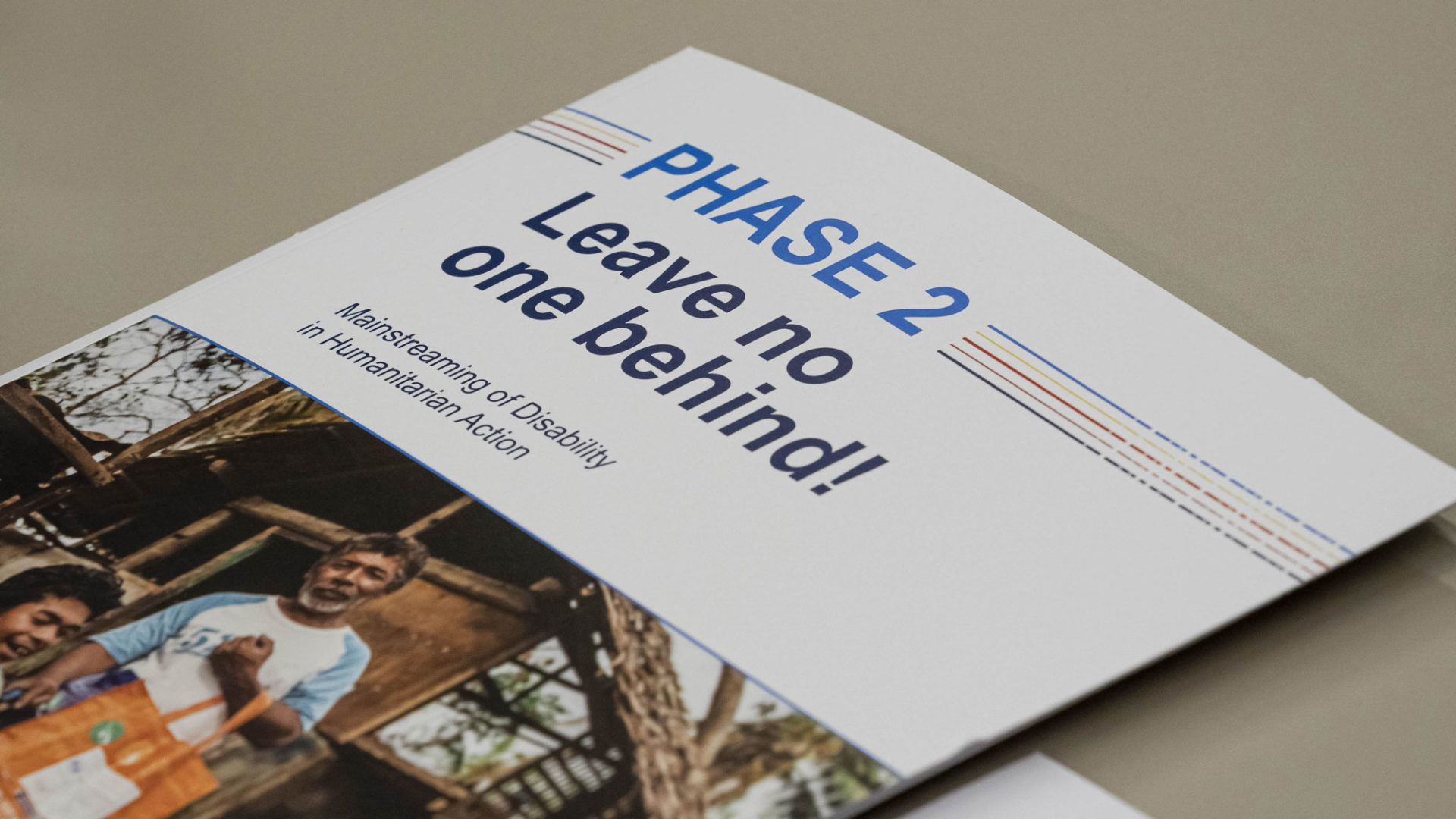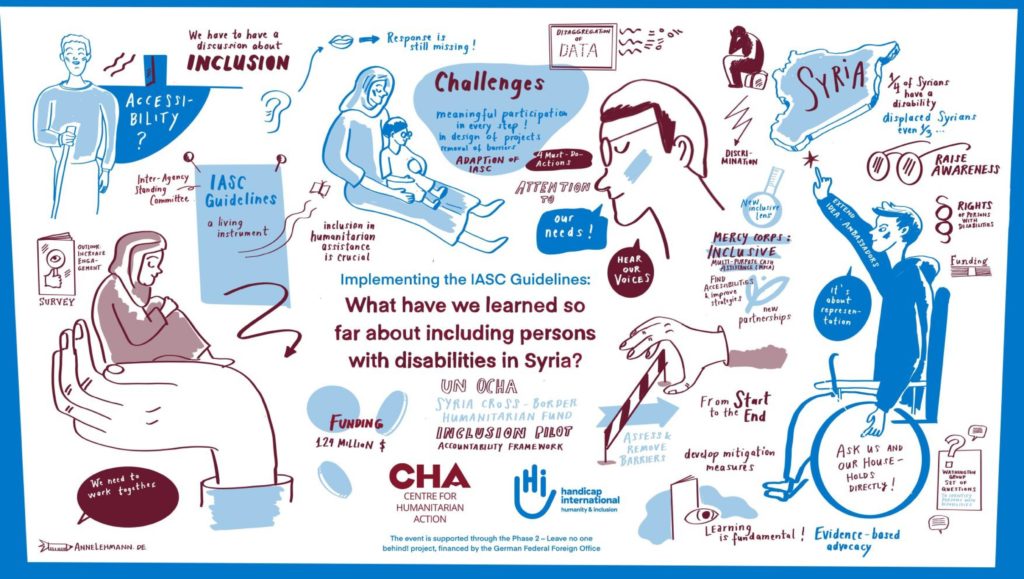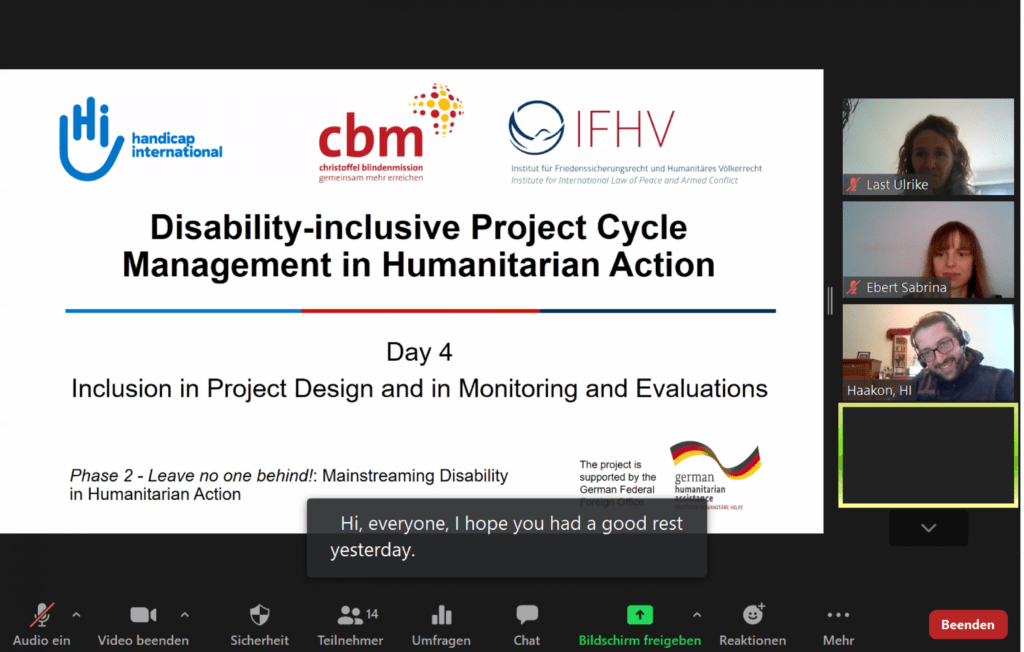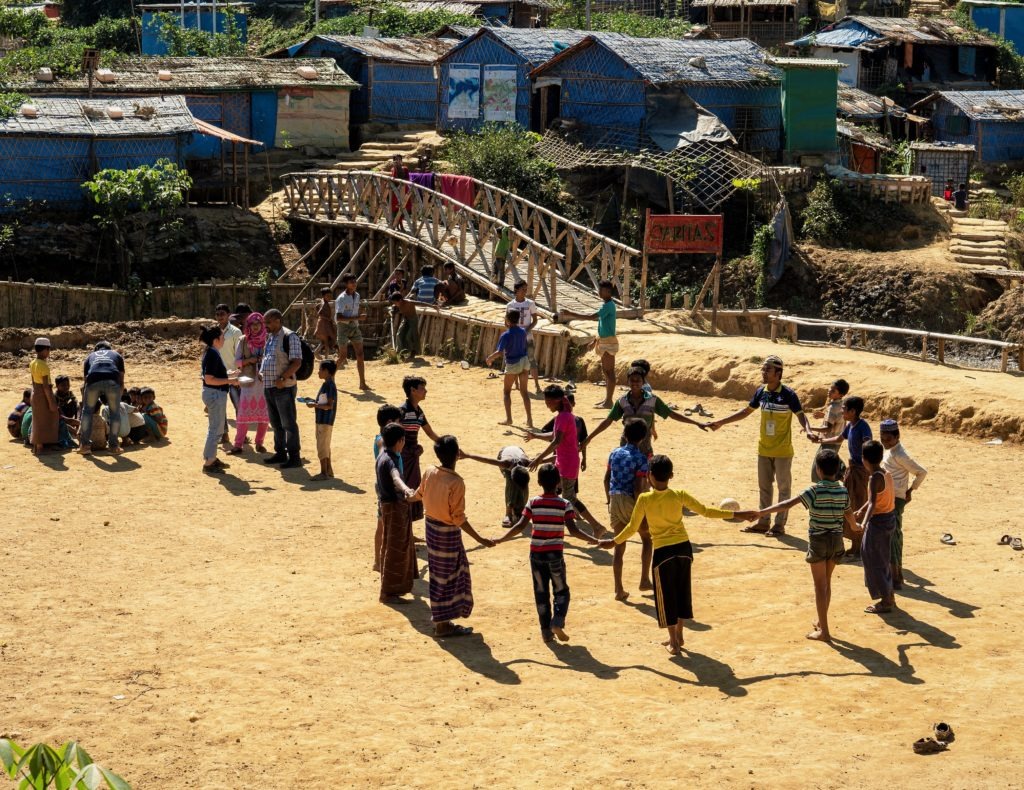Annual Review of the Project “Phase 2 -Leave no one behind!”
Category
Applied Accompanying Research Capacity Building Global Guidelines & Coordination Mechanisms
Hello dear visitors, participants and partners,
Another year has passed and our “Phase 2 – Leave no one behind!” project has come to an end. However, before we provide you with more details about the plans for the third project phase and an overall review of phase 2, we would like to look back at a number of exciting project activities, which we implemented in 2021.
In the following, we would like to inform you about the topics we worked on, what our “highlights” were and what participants said about our project activities this year:
1. What have we achieved at global level?
We are pleased to have published the Inter-Agency Standing Committee (IASC) Guidelines on the Inclusion of Persons with Disabilities in Humanitarian Action in Spanish and French in early 2021, through a participatory translation process. This supports the work of humanitarian actors in Francophone and Spanish-speaking countries.
At the same time, we have worked tirelessly over the past two years to ensure that the IASC Guidelines are more widely disseminated in the humanitarian community. With this agenda, we have been able to place disability as a cross-cutting topic and discuss the operationalisation of the Guidelines at several international events.
For example, at the panel discussion on the implementation of the IASC Guidelines in Syria together with the Centre for Humanitarian Action (CHA) which was supported by the project. On the panel, a self-advocate and ambassador for persons with disabilities reported on the progress of inclusion in humanitarian action in Syria. She also shared details on empowerment activities that have supported her to participate in this process:
Being my own advocate, learning about barriers and mitigation measures, realising my potential and building the awareness of my community and inclusion helped me a lot in gaining more trust in myself.
Gulnaz Ibrahim, self-advocate from Syria
In addition, the work of the Disability Reference Group Working Group 1 (DRG WG1), which we contribute to, is making excellent progress! Based on our and training materials of other organisations, E-learning modules and face-to-face/ online training packages are currently being created in an inter-agency process and will be available beginning of next year.

2. How have we strengthened capacities at national level?
To increase the awareness and technical capacity of German humanitarian actors and their local partners on inclusive humanitarian action, the project team provided 9 online trainings.
The content covered a wide range of topics based on regional priorities, sectors and the needs of participating organisations. All our trainings were based on the content of the IASC Guidelines.
The must-do actions [of the IASC Guidelines] are surprisingly practical! I was expecting something a bit more theoretical.
Participant of the regional training „Disability-inclusive Project Cycle Management“ for Central/ Southeast Asia
The participants enjoyed our trainings because of the combination of professional expertise, simple and clear delivery of technical content and its application in group and scenario work. Additionally, participants gave feedback that the inputs of guest speakers with and without disabilities from different regional contexts were also very inspiring and supported their learning.
I very much appreciate the input of the guest speakers and the opportunity to exchange.
Participant of the „Meaningful participation of persons with disabilities in humanitarian action“, facilitated by CBM
More information about the trainings can be found here.

3. What evidence-based findings have been obtained?
In order to strengthen and sustainably document evidence on disability-inclusive programmes, projects and humanitarian coordination, one field research report was published “Mainstreaming Disability in Humanitarian Action” in Cox’s Bazar, Bangladesh by the Institute for International Law of Peace and Humanitarian Action (IFHV) within the framework of the project. This report captures good practices and challenges in implementing inclusive humanitarian action in the Rohingya refugee camp in Bangladesh, where more than 854,000 Rohingya refugees live.
Lastly, we were pleased to see the publication of the research report “From Commiments to Action: Towards a Disability-Inclusive Humanitarian Response in South Sudan?” in February 2022. It focuses on the progress and challenges in implementing the must-do actions of the IASC Guidelines on Inclusion of Persons with Disabilities in Humanitarian Action, in South Sudan.

The project is funded by the German Federal Foreign Office (AA) and carried out together with the Christoffel Blindenmission Christian Blind Mission e.V. (CBM) and the Institute for International Law of Peace and Humanitarian Law (IFHV) at the Ruhr-University Bochum.